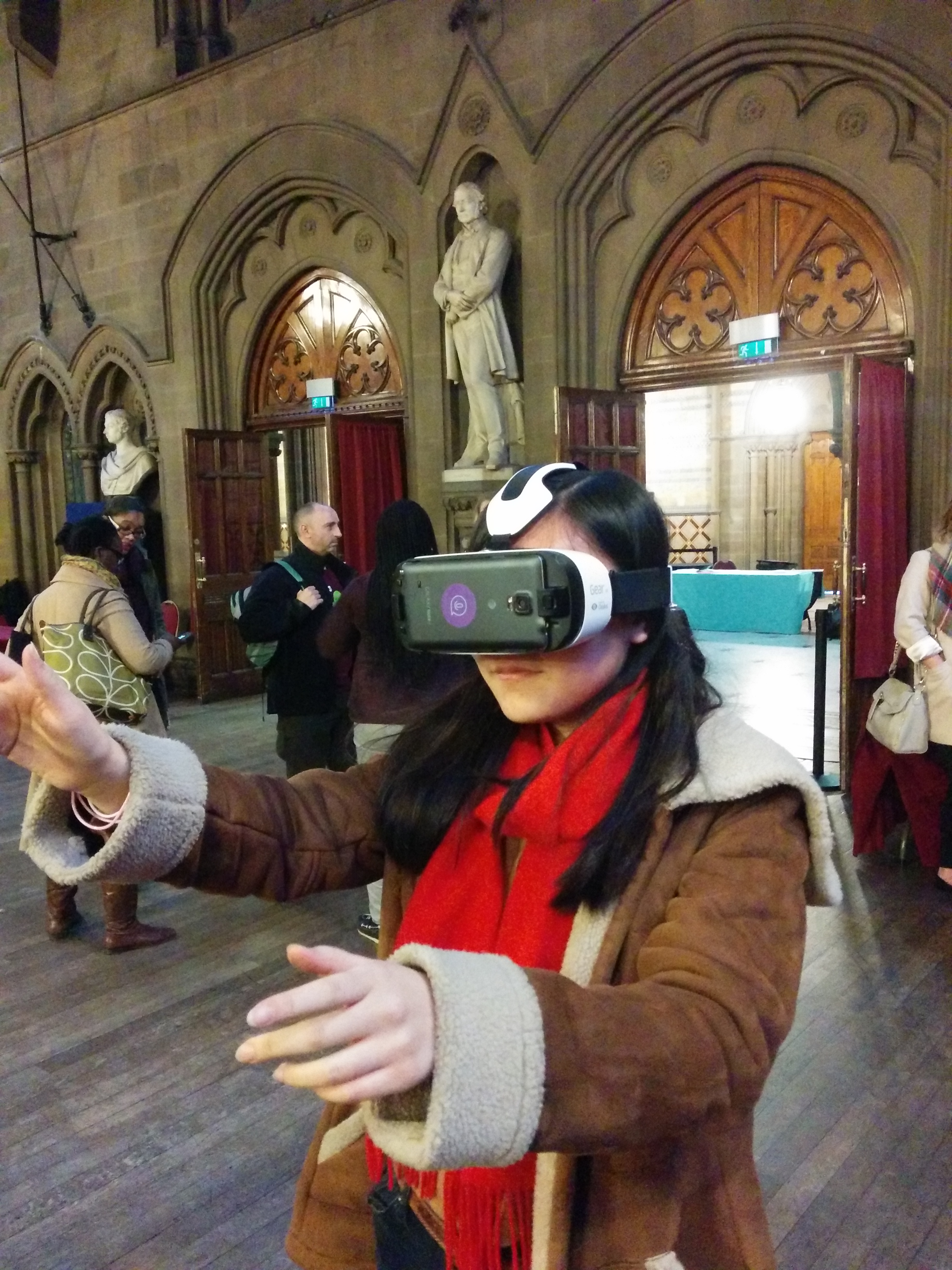We recently attended Talk UX in Manchester Town Hall, a beautiful space where UX professionals were invited to collaborate, meet and share learnings.
What is Talk UX?
Talk UX is a new event in Manchester. The length of talks varied, breaking up the usual format of a conference. There was a round of 300 second lightning talks, mixing the longer in-depth talks with shorter, snappier learnings.
We got the chance to try out a range of exciting Virtual Reality (VR) technologies, such as Oculus Rift, Google Cardboard and Samsung Gear VR.

Main themes/topics from the conference talks:
The topics of each talk varied greatly, but generally they were centred around:
- How to design for difficult audiences, e.g. children, people with accessibility needs and people who experience gender variance
- Designing for mobile
- Challenges related to design and UX work, e.g. designing for the digital afterlife and exponential growth in political campaigns
- The usefulness of different design components or approaches, e.g. using cards to display information
Sketchnotes from some of the talks:
Key highlights and learnings from Talk UX:
- Yvonne Caraiva on the importance of focusing on prioritising content, personalisation and providing a seamless experience across multiple touchpoints when designing for complex services on mobile.
- Emily Heath on the usefulness of cards as a design element to support discovery across different types of content and platforms. She encouraged UX practitioners to leverage the familiarity, portability and ‘snackability’ of cards, showing how cards allow for easy saving and sharing of content.
- Hannah Tempest on how to use APIs in UX design to make sure that applications provide timely, relevant and succinct information.
- Mickela Perera on how to do research and design for children, highlighting that children’s behaviour, needs and abilities are different from those of adults and vary greatly depending on age. She highlighted the importance of setting clear research objectives, preparing, setting the scene and being flexible enough to adapt to each child in research sessions.
- Alberta Soranzo challenging us to question designing only for onboarding and the start and continuation of a digital experience. She highlighted that we also need to design for the choice of ending an experience or an online account, to design even for the death of an individual’s digital presence.
Learn more about UX:
- Training Course: Fundamentals of Design Thinking and Ideation and creative collaboration
- Training Course: Designing for Persuasion
- Training Course: Designing for Human Mind/Brain
- Training Course: Rapid Prototyping with Axure (Beginner)
- Training Course: Rapid Prototyping with Axure (Intermediate)
- Training Course: Rapid Prototyping with Axure (Advanced)
- Training Course: User Testing
- Training Course: Practical Accessibility




